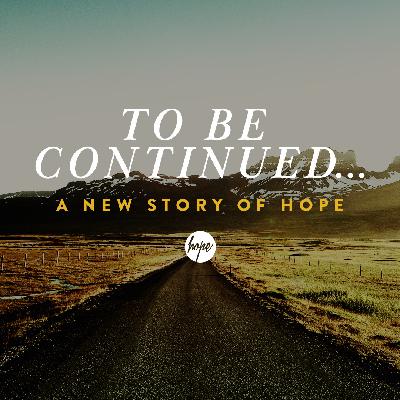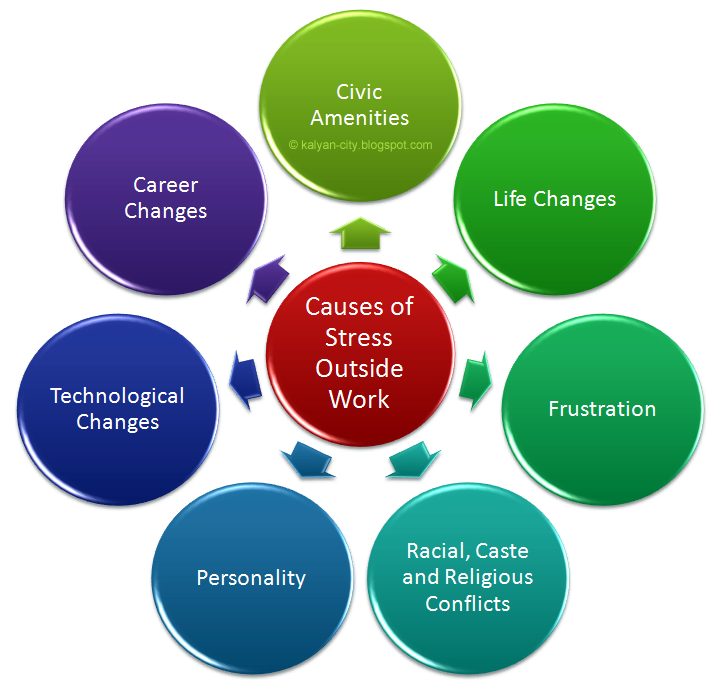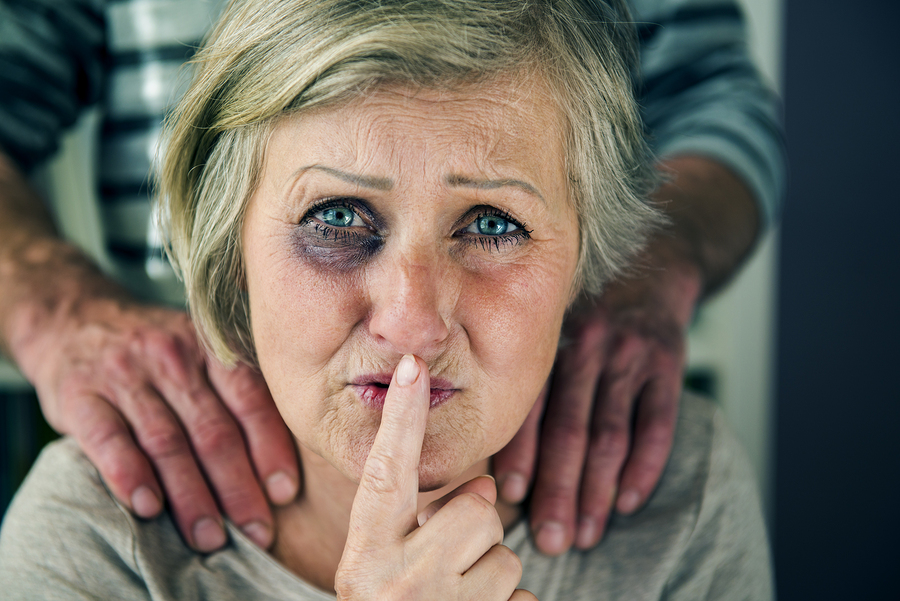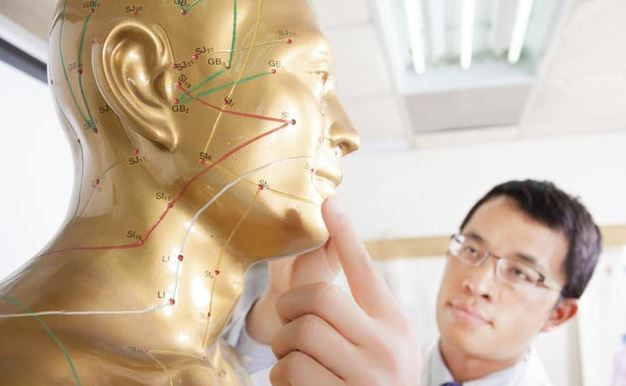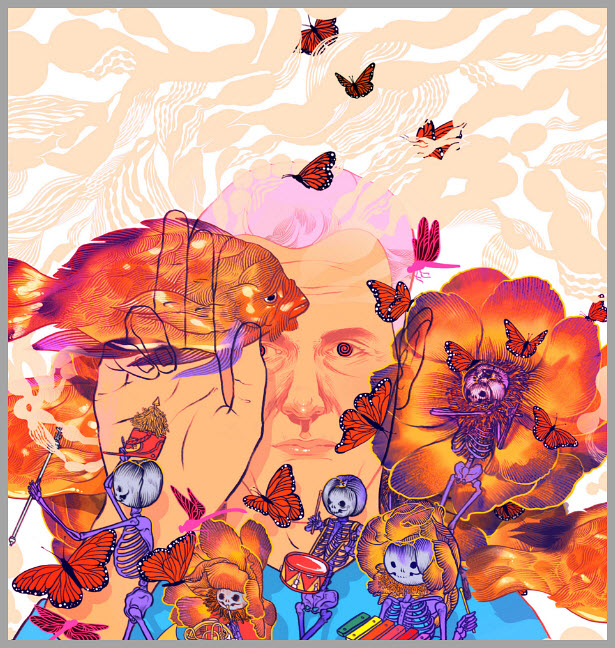To be crossed
Cross Faded: When You’re Drunk AND Stoned
When you are high and drunk at the same time, you are said to be “cross faded”. And although that may SOUND like a lot of fun, the truth is mixing alcohol and marijuana can be a spectacularly bad idea.
What is Cross Fading?“It’s apples and vegetables. They’re very different drugs. It’s because of this difference that makes combining marijuana and alcohol so popular.” ~ Dr. Gary Wenk, Professor of Psychology and Neuroscience, Ohio State University Alcohol and marijuana are the two most commonly-used intoxicants in the United States. Among people who drink, marijuana is the most popular drug of choice. And according to Scientific American, those who use both are twice as likely to use them simultaneously rather than individually.
Using the two in combination is known as “cross fading”. People cross fade for three main reasons:
- To enhance the effects of the first drug taken
- To increase their level of intoxication
- Because they are no longer making rational decisions about the substances they are taking.
“Weed before beer and you’re in the clear.Beer before grass and you’re on your ass.” ~ ABSOLUTELY INCORRECT myth about mixing booze and pot Regardless of the conventional folk “wisdom” of this rhyme, the multi-substance intoxication resulting from cross-fading can have serious consequences, both physically and mentally. Used alone, alcohol and marijuana produce different effects:
- Alcohol is a central nervous system depressant that profoundly affects the drinker’s motor skills.
- Cannabis is a psychoactive mood-altering drug that primarily has cognitive effects.
This combination can lead to unpredictable, unpleasant, and potentially dangerous side effects. Let’s look at some of the possible pitfalls of cross-fading.
“Greening Out”: Marijuana-Induced Sickness Although it is virtually impossible to fatally overdose on cannabis, it IS possible to get very sick from a temporary overdose also known as a “greenout”. This is when the brain’s cannabinoid receptors are chronically over-stimulated by too much THC, triggering a number of adverse side-effects. While not fatal, the painful symptoms of greening out include:
This is when the brain’s cannabinoid receptors are chronically over-stimulated by too much THC, triggering a number of adverse side-effects. While not fatal, the painful symptoms of greening out include:
- Extreme anxiety
- Disorientation
- Loss of coordination
- Decreased verbal ability
- Shaking
- Chills
- Sweating
- Dilated Pupils
- Rapid heartbeat
- Shortness of breath
- Upset stomach
- Nausea
- Vomiting
- Dizziness—feeling as if the room is spinning
The likelihood of green out crossfade increases significantly when alcohol is consumed prior to smoking marijuana. Because many of these side effects also occur during alcohol intoxication—disorientation, nausea, dizziness, etc.—the combined effects are magnified to the point that it can be incapacitating. Both booze and pot consumption can cause ‘orthostatic hypotension’—low blood pressure occurring when abruptly sitting up or standing. Orthostatic hypotension happens because as the THC and/or alcohol is absorbed, blood vessels dilate and blood pressure suddenly drops. This causes decreased blood flow to the brain and fainting. It occurs unpredictably, with no warning. This condition can even strike hours after use. It’s not unusual for a person who is cross-fading via a greenout to have to lie down to keep from falling down. Obviously, this increases the risk of accidents and injuries from falls.
Orthostatic hypotension happens because as the THC and/or alcohol is absorbed, blood vessels dilate and blood pressure suddenly drops. This causes decreased blood flow to the brain and fainting. It occurs unpredictably, with no warning. This condition can even strike hours after use. It’s not unusual for a person who is cross-fading via a greenout to have to lie down to keep from falling down. Obviously, this increases the risk of accidents and injuries from falls.
“Having any toxin hanging around in your system will get you in trouble, and alcohol is no exception.” ~ Dr. Sneh Khemka, Medical Director, Bupa International It’s an established fact that drinking too much alcohol can cause nausea and vomiting. There are three main theories on why excessive alcohol consumption makes people throw up:
- FIRST, alcohol is an irritant. Chronic boozing can even lead to alcohol -induced gastritis, an inflammation of the stomach lining.
 This condition, literally a peeling away of the inside of the stomach, is characterized by severe abdominal pain and vomiting. It can be triggered or worsened by ANY alcohol consumption within the past 72 hours, but it is more likely after an episode of binge-drinking.
This condition, literally a peeling away of the inside of the stomach, is characterized by severe abdominal pain and vomiting. It can be triggered or worsened by ANY alcohol consumption within the past 72 hours, but it is more likely after an episode of binge-drinking. - SECOND, the ethyl alcohol found in beer, wine, and hard liquors is a toxin. Just as relevant, when alcohol is metabolized, acetaldehyde – another toxin – is produced. One of the side effects of a buildup of these two toxins is vomiting, as the body tries to purge itself.
- THIRD, alcohol-induced vomiting is a kind of motion sickness. Alcohol creates a fluid imbalance in the inner ear, causing dizziness and nausea.
But here’s the thing – marijuana is an anti-emetic. In other words, it interferes with the body’s ability to throw up. Considering what alcohol does to the body, this is extremely important. Since one of the side effects of crossfading is nausea, excessive consumption of either or both substances can leave a person feeling profoundly ill. But sometimes, they will be unable to actually throw up and expel the offending toxins. This leads to prolonged feelings of queasiness, dizziness, and sickness. But the real hazard of cross fading is the alcohol-induced aspiration. This is when an intoxicated person tries to throw up but can’t. Since marijuana impairs the gag reflex, it is highly possible for a drunk/stoned/cross-faded person to fatally choke on their own vomit. Asphyxiating on their own vomitus while intoxicated was the cause of death for several well-known people, including:
But sometimes, they will be unable to actually throw up and expel the offending toxins. This leads to prolonged feelings of queasiness, dizziness, and sickness. But the real hazard of cross fading is the alcohol-induced aspiration. This is when an intoxicated person tries to throw up but can’t. Since marijuana impairs the gag reflex, it is highly possible for a drunk/stoned/cross-faded person to fatally choke on their own vomit. Asphyxiating on their own vomitus while intoxicated was the cause of death for several well-known people, including:
- Jimi Hendrix, legendary guitarist
- John Bonham, drummer for Led Zeppelin
- Bon Scott, lead singer for AC/DC
- Crash Holly, professional wrestler
- Kevin Lloyd, English actor
- Ryan Knight, star of “The Real World”
- Leonard Chadwick, Medal of Honor recipient
Even if the person doesn’t die immediately, incomplete vomiting can be dangerous, because if acidic stomach contents are inhaled into the lungs, it can cause corrosive damage. This often leads to a rapid infection that soon develops into a fatal form of pneumonia.
This often leads to a rapid infection that soon develops into a fatal form of pneumonia.
“The key finding of this study is that after alcohol exposure, threat-detecting brain circuits can’t tell the difference between a threatening and non-threatening social stimulus.” ~ Dr. Marina Wolf, Ph.D., Rosalind Franklin University of Medicine and Science First, look at these substances separately. Drinking – especially excessively – severely affects an individual’s executive cognitive functioning and decision-making ability. Under the influence of alcohol, a person is:
- More impulsive
- Unable to delay gratification
- Prone to compulsive behavior
- More likely to engage in risky behaviors
- Less likely to avoid harm
- Myopic to possible consequences
- Disinhibited
With this in mind, it comes as no surprise the chronic drinkers score poorly on the Iowa Gambling Task, a psychological test that measures executive functioning by simulating real-life decision-making.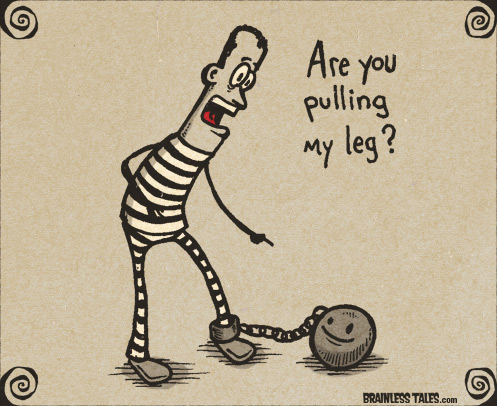 Likewise, chronic cannabis use is also associated with impaired executive functioning, especially in these areas:
Likewise, chronic cannabis use is also associated with impaired executive functioning, especially in these areas:
- Decision-making
- Emotional regulation
- Problem-solving
- Processing speed
- Attention
- Memory
- Learning
- Impulsivity
- Disinhibition
- Verbal fluency
- Psychomotor speed
The effects of either of these substances are serious enough, but when they are combined, they can be even worse. A 2015 study determined that when ANY amount of alcohol is consumed while also using smoking pot, the user’s blood concentration of THC – marijuana’s main psychoactive ingredient – is significantly elevated. This means the person gets higher faster, perhaps much more than they intended. Being this impaired can lead to risky behaviors, such as:
- Unsafe/unprotected sex
- Being unaware of dangerous surroundings
- Irresponsible gambling
- Driving Under the Influence
“As drunken driving has declined, drugged driving has increased dramatically, and many of today’s impaired drivers are combining two or more substances. ” ~ Ralph S. Blackman, President, Foundation for Advancing Alcohol Responsibility Alone, alcohol and marijuana each have a negative effect on a person’s ability to operate a motor vehicle safely. Alcohol affects safe driving skills almost immediately, even in individuals with a BAC as low as .02% – typical for a full-grown man after “only” two beers.
” ~ Ralph S. Blackman, President, Foundation for Advancing Alcohol Responsibility Alone, alcohol and marijuana each have a negative effect on a person’s ability to operate a motor vehicle safely. Alcohol affects safe driving skills almost immediately, even in individuals with a BAC as low as .02% – typical for a full-grown man after “only” two beers.
- Judgment – An alcohol-impaired driver will be less cautious.
- Concentration – This makes it more difficult to shift attention between various driving tasks.
- Regulating speed
- Using proper signals.
- Awareness of other vehicles
- Maintaining proper lane position and safe distance
- Conversing with other passengers.
- Comprehension – Drinking impairs a driver’s understanding of roadway signs, signals, and situations – stop signs, emergencies, weather conditions, etc.
- Coordination – Fine motor skills (example: signaling) and gross motor skills (for example: steering) are all affected by alcohol.
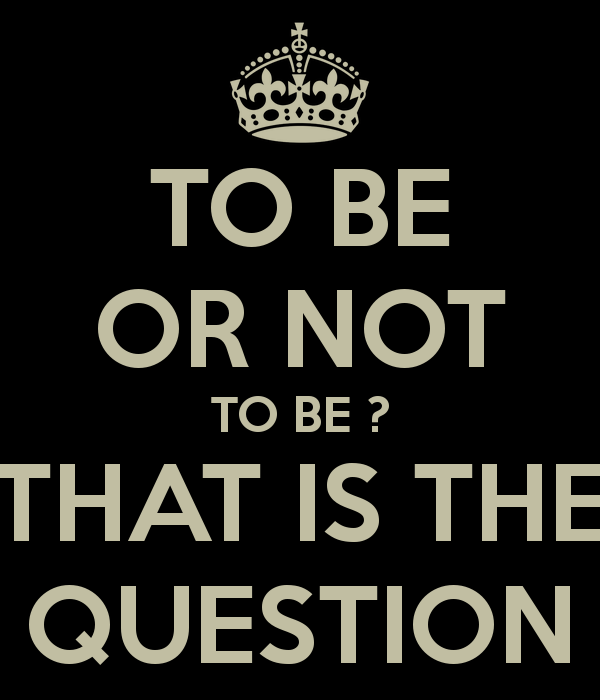
- Vision and Hearing – After drinking, an individual sees and hears less clearly – by as much as32%.
- Reaction time – Responses are up to 25% slower after drinking.
To judge the effects of marijuana on driving, one only has to look at states where it has been legalized:
- Colorado: In the first six months of legalization, drug detox facilities reported that the percentage of patients arrested for a marijuana DUI jumped from 8% to 15%.
- Washington State: During the first year of legalization, driving fatalities involving marijuana DOUBLED.
Additionally, according to the National Highway Traffic Safety Administration:
- In states where marijuana is illegal, marijuana is involved in just 16% of traffic fatalities.
- In those states where medical marijuana is allowed, that percentage jumps to 21%.
- Where recreational use is legal, 31% of traffic deaths involve marijuana.

“The bulk of the research suggests that driving drunk is worse than driving stoned, but driving stoned is worse than driving sober. The research suggests that when people are under the influence of both marijuana and alcohol, it does increase the probability of getting into a crash.” ~ Beau Kilmer, a senior researcher at the RAND Corporation and a specialist in drug policy Cannabis use has been shown to affect a user’s visual processing in multiple ways:
- 11% slower retinal response
- Decreased peripheral vision, resulting in “tunnel vision”
Again, because the effects of marijuana are magnified by drinking, driving while under the influence of both multiplies the risks. The NHTSA also reports that compared to a driver doing neither, drinking while using marijuana results in an eightfold risk of being involved in a fatal traffic accident.
The Psychological Side Effects of CrossfadingMany people who experience a crossfaded bad trip also suffer severe psychological stress in the form of:
- Anxiety – Marijuana use and drinking are both associated with an increased risk for anxiety and panic attacks.
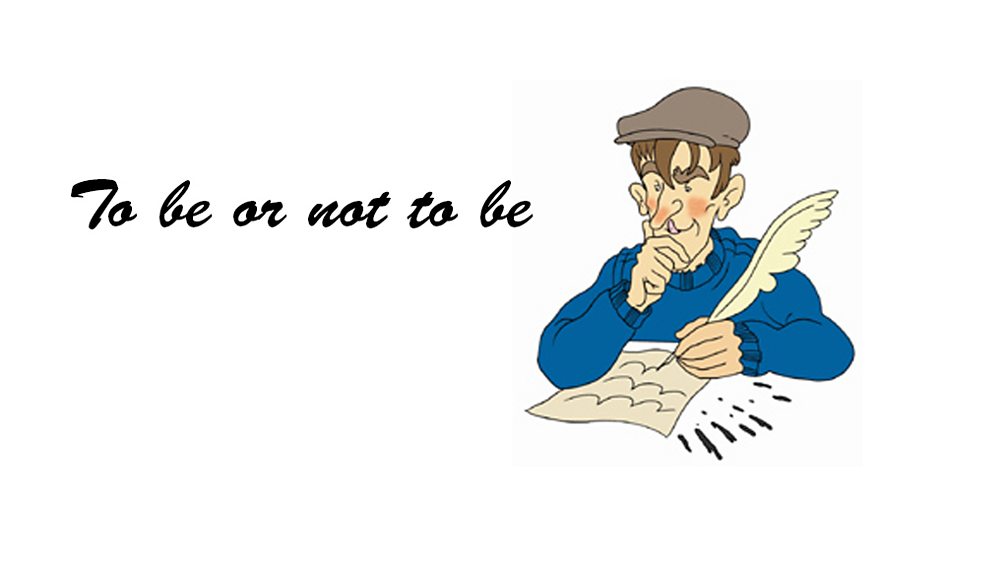
- Paranoia – A 2014 study determined that compared to participants given a placebo, a person under the influence of cannabis was far more likely to feel paranoid during a social setting, 50% versus 30%.
- Psychosis – Compared to non-users, marijuana users have a 40% increased risk of psychosis. Especially relevant, frequent marijuana users’ risk of psychotic symptoms is up to 200% higher than that of non-users, indicating a correlation between dose and risk.
When alcohol is chronically added to the mix, psychological problems become a probability, rather than a mere possibility.
Does Cross-Fading Lead to Cross-Addiction? “Our results suggest that cannabis use appears to be associated with an increased vulnerability to developing an Alcohol Use Disorder, even among those without any history of this. Marijuana use also appears to increase the likelihood that an existing Alcohol Use Disorder will continue over time. ” ~Dr. Renée Goodwin, Ph.D., Associate Professor of Epidemiology, Mailman School of Public Health, Columbia University After analyzing the survey data from nearly 28,000 adults, researchers at Columbia University’s Mailman School of Public Health and the City University of New York have determined that cannabis use appears to significantly contribute to the continuation of or subsequent development of a drinking problem. Using data compiled from the National Epidemiologic Survey on Alcohol and Related Conditions, researchers assessed adults who started using marijuana when they had no history of alcoholism, at two different points, three years apart.
” ~Dr. Renée Goodwin, Ph.D., Associate Professor of Epidemiology, Mailman School of Public Health, Columbia University After analyzing the survey data from nearly 28,000 adults, researchers at Columbia University’s Mailman School of Public Health and the City University of New York have determined that cannabis use appears to significantly contribute to the continuation of or subsequent development of a drinking problem. Using data compiled from the National Epidemiologic Survey on Alcohol and Related Conditions, researchers assessed adults who started using marijuana when they had no history of alcoholism, at two different points, three years apart.
- Among those who were marijuana users at both assessment points, 23% had developed an Alcohol Use Disorder.
- Among non-users, only 5% had an AUD.
- Alcoholics who did not also use marijuana were far more likely to succeed in recovery.
Dr. Goodwin also said, “If future research confirms these findings, investigating whether preventing or delaying first use of marijuana might reduce the risk of developing AUDs among some segments of the population may be worthwhile. ”
”
The implications are clear – marijuana and alcohol are each dangerous enough on their own, presenting a host of hazards to a user’s mental, physical, and psychological health. In addition, the use of either intoxicant increases the risk of injuries and accidents. Finally, both substances are associated with socioeconomic problems such as poor grades, unemployment, and relationship difficulties. But because of the mutual and combined effects of pot and booze, the likelihood of negative consequences skyrockets. Cross fading becomes much more than a different kind of intoxication – it becomes a slippery slope leading to:
- Unpleasant side-effects
- A loss of control due to over-intoxication
- Risky behaviors
- Psychological illness
- Cognitive impairment
- Accidents and injuries
- Substance abuse and addiction
- Accidental death
Here’s the thing – even legal substances can be dangerous, especially if they are used and abused in the wrong combination. So if you are finding it hard to completely abstain from the use of alcohol or marijuana, the best way to protect yourself is to completely avoid using them together.
So if you are finding it hard to completely abstain from the use of alcohol or marijuana, the best way to protect yourself is to completely avoid using them together.
Give it a Rating!
Full Infographic:
Tagged dangers of being crossfaded, getting help for addiction in Washington, what happens when you drink and smoke weed, what is cross faded
cross | meaning of cross in Longman Dictionary of Contemporary English
From Longman Dictionary of Contemporary EnglishRelated topics: Biology, Sport, Banking, Microbes, genetics, biochemcrosscross1 /krɒs $ krɒːs/ ●●● S2 W2 verb 1 go from one side to another [intransitive, transitive]CROSS to go or stretch from one side of something such as a road, river, room etc to the othercross to He crossed to the window.cross (over) the road/street/river etc It’s easy to have an accident just crossing the road. He was hit by a car when he tried to cross over the road near Euston station.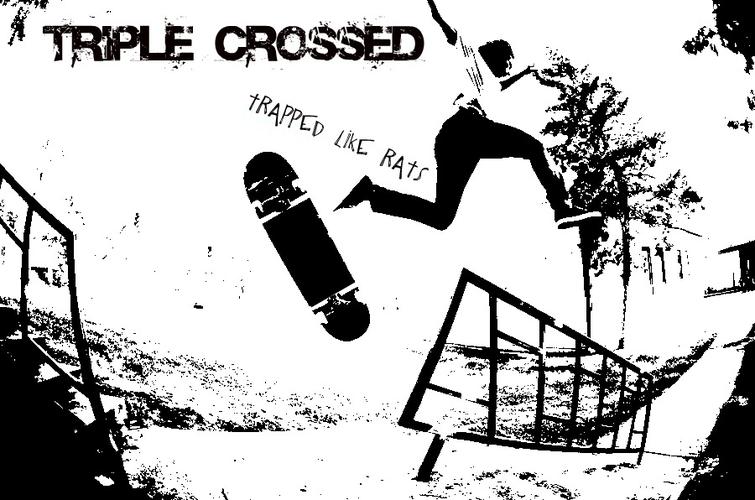 cross the Atlantic/the Channel etc the first steamship to cross the Atlantic An old bridge crosses the river.cross over She crossed over to sit beside Dot.► see thesaurus at travel 2 cross a line etc [transitive]CROSS if you cross a line, track etc, you go over and beyond it He raised his arms in triumph as he crossed the line for his 100-metres win.3 two roads/lines etc [intransitive, transitive]CROSS if two or more roads, lines, etc cross, or if one crosses another, they go across each other The by-pass crosses Wilton Lane shortly after a roundabout.
4 legs/arms/ankles [transitive]HBH if you cross your legs, arms, or ankles, you put one on top of the other She was sitting on the floor with her legs crossed.5 → cross somebody’s mind6 → cross somebody’s face7 → cross your fingers8 breed of plant/animal [transitive]HBMIX to mix two or more different breeds of animal or plant to form a new breed → crossbreed a flower produced by crossing several different varietiescross something with something These cattle were crossed with a breed from the highlands.
cross the Atlantic/the Channel etc the first steamship to cross the Atlantic An old bridge crosses the river.cross over She crossed over to sit beside Dot.► see thesaurus at travel 2 cross a line etc [transitive]CROSS if you cross a line, track etc, you go over and beyond it He raised his arms in triumph as he crossed the line for his 100-metres win.3 two roads/lines etc [intransitive, transitive]CROSS if two or more roads, lines, etc cross, or if one crosses another, they go across each other The by-pass crosses Wilton Lane shortly after a roundabout.
4 legs/arms/ankles [transitive]HBH if you cross your legs, arms, or ankles, you put one on top of the other She was sitting on the floor with her legs crossed.5 → cross somebody’s mind6 → cross somebody’s face7 → cross your fingers8 breed of plant/animal [transitive]HBMIX to mix two or more different breeds of animal or plant to form a new breed → crossbreed a flower produced by crossing several different varietiescross something with something These cattle were crossed with a breed from the highlands. 9 → somebody’s paths cross10 → cross that bridge when you come to it11 → cross my heart (and hope to die)12 make somebody angry [transitive]ANNOY to make someone angry by opposing their plans or orders He hated anyone who crossed him.13 sport [intransitive, transitive]DS to kick, throw, or hit the ball across the playing area in a sport such as football, hockey etc14 cheque [transitive] British EnglishBFB to draw two lines across a cheque to show that it must be paid into the bank account of the person whose name is on it15 letters [intransitive] if two letters about the same subject cross in the post, each was sent before the other was received
16 → cross swords (with somebody)17 → cross yourself 18 → cross somebody’s palm with silver → dot the i’s and cross the t’s, → cross the Rubicon → cross something ↔ off → cross something ↔ out → cross over→ See Verb tableExamples from the Corpuscross• There's a post office where Oakland Road crosses 32nd Street.
9 → somebody’s paths cross10 → cross that bridge when you come to it11 → cross my heart (and hope to die)12 make somebody angry [transitive]ANNOY to make someone angry by opposing their plans or orders He hated anyone who crossed him.13 sport [intransitive, transitive]DS to kick, throw, or hit the ball across the playing area in a sport such as football, hockey etc14 cheque [transitive] British EnglishBFB to draw two lines across a cheque to show that it must be paid into the bank account of the person whose name is on it15 letters [intransitive] if two letters about the same subject cross in the post, each was sent before the other was received
16 → cross swords (with somebody)17 → cross yourself 18 → cross somebody’s palm with silver → dot the i’s and cross the t’s, → cross the Rubicon → cross something ↔ off → cross something ↔ out → cross over→ See Verb tableExamples from the Corpuscross• There's a post office where Oakland Road crosses 32nd Street.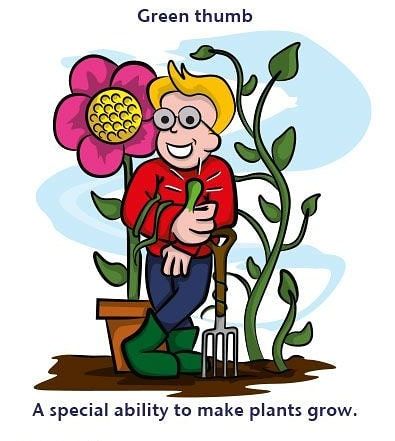 • I wouldn't cross her if I were you.• Doris sat down and crossed her legs.• Before you cross, make sure there are no other cars coming.• They also began to cross over from the rhythm-and-blues audience to the mainstream pop audience.• They cross roads diagonally, walk in front of parked cars and forget to look in more than one direction at junctions.• They crossed the Atlantic in a convoy of fifty ships.• This is the point where Washington's army crossed the Delaware River.• Johnson crossed the finish line in first place.• He plans to cross the Himalayas on foot.• Military traffic has been crossing the new pontoon bridge since Dec. 31 at a rate up to 400 vehicles each day.• How are we going to cross the river?• It took a lot of courage to cross the Rocky Mountains in those days.• Antonia went to cross the street to buy us some sodas.• Look both ways before crossing the street.• I had to reverse, climb up to retrieve the runner and cross the wall for a third time.• As you accomplish tasks, cross them off your list.
• I wouldn't cross her if I were you.• Doris sat down and crossed her legs.• Before you cross, make sure there are no other cars coming.• They also began to cross over from the rhythm-and-blues audience to the mainstream pop audience.• They cross roads diagonally, walk in front of parked cars and forget to look in more than one direction at junctions.• They crossed the Atlantic in a convoy of fifty ships.• This is the point where Washington's army crossed the Delaware River.• Johnson crossed the finish line in first place.• He plans to cross the Himalayas on foot.• Military traffic has been crossing the new pontoon bridge since Dec. 31 at a rate up to 400 vehicles each day.• How are we going to cross the river?• It took a lot of courage to cross the Rocky Mountains in those days.• Antonia went to cross the street to buy us some sodas.• Look both ways before crossing the street.• I had to reverse, climb up to retrieve the runner and cross the wall for a third time.• As you accomplish tasks, cross them off your list. • What crosses this border is information, in the form of chemicals.• She had crossed this road before, deftly robbing Peter to slip a rubber cheque into Paul's back pocket.• Some species of plants can be crossed very easily.
cross (over) the road/street/river etc• The following day Arista ordered General Torrejon with 1,600 cavalry to cross the river.• Dennison crossed the road and disappeared again.• Marcelle entered his room seconds after she saw him cross the street from her window.• We crossed the street, I felt sick.• When I was hit by a drunk driver in 1980, crossing the road in Los Angeles.• She crossed the street to get it.Related topics: Education, Sport, Other sports, Militarycrosscross2 ●●● S3 W3 noun [countable] 1 mixture of things a mixture of two things, breeds, or qualitiescross between The tour manager’s role is a cross between hostess and courier.
• What crosses this border is information, in the form of chemicals.• She had crossed this road before, deftly robbing Peter to slip a rubber cheque into Paul's back pocket.• Some species of plants can be crossed very easily.
cross (over) the road/street/river etc• The following day Arista ordered General Torrejon with 1,600 cavalry to cross the river.• Dennison crossed the road and disappeared again.• Marcelle entered his room seconds after she saw him cross the street from her window.• We crossed the street, I felt sick.• When I was hit by a drunk driver in 1980, crossing the road in Los Angeles.• She crossed the street to get it.Related topics: Education, Sport, Other sports, Militarycrosscross2 ●●● S3 W3 noun [countable] 1 mixture of things a mixture of two things, breeds, or qualitiescross between The tour manager’s role is a cross between hostess and courier. Their dog is a cross between two well-known breeds. 2 mark on paper especially British English a) SIGN/INDICATIONa mark (x or +) used on paper, to represent where something is, or where something should be I’ve put a cross on the map to mark where our street is. Please sign your name by the cross. b) SECORRECTa mark (x) used on paper to show that something that has been written or printed is not correct My homework got a lot more ticks than crosses. c) SIGN YOUR NAMEa mark (x or +) used by someone who cannot write, in order to sign their name
3 Christian sign a) SCC the cross the cross that Jesus Christ died on Christians believe that Jesus died on the cross for our sins. b) CFRRCan object, picture, or mark in the shape of a cross, used as a sign of the Christian faith or for decoration Pauline wore a tiny gold cross.
Their dog is a cross between two well-known breeds. 2 mark on paper especially British English a) SIGN/INDICATIONa mark (x or +) used on paper, to represent where something is, or where something should be I’ve put a cross on the map to mark where our street is. Please sign your name by the cross. b) SECORRECTa mark (x) used on paper to show that something that has been written or printed is not correct My homework got a lot more ticks than crosses. c) SIGN YOUR NAMEa mark (x or +) used by someone who cannot write, in order to sign their name
3 Christian sign a) SCC the cross the cross that Jesus Christ died on Christians believe that Jesus died on the cross for our sins. b) CFRRCan object, picture, or mark in the shape of a cross, used as a sign of the Christian faith or for decoration Pauline wore a tiny gold cross. 4 punishment an upright post of wood with another crossing it near the top, that people in the past were fastened to with nails and left to die on as a punishment5 military awardPGO a decoration in the shape of a cross that is given to someone as an honour, especially for military courage He was awarded the George Cross.6 sport a) DSa kick or hit of the ball in a sport such as football, hockey etc, that goes across the field b) DSOa way of hitting someone in the sport of boxing, in which your arm goes over theirs as they try to hit you He caught his opponent with a right cross to the chin.7 problem if you describe something as the cross that someone has to bear, you mean it is a problem that makes them very unhappy or worried, and that continues for a long time I feel sorry for you, but we all have our crosses to bear. → the sign of the CrossExamples from the Corpuscross• After 83 minutes Burchill swung in a cross from the left.• Christians believe that Jesus died on a cross for our sins.
4 punishment an upright post of wood with another crossing it near the top, that people in the past were fastened to with nails and left to die on as a punishment5 military awardPGO a decoration in the shape of a cross that is given to someone as an honour, especially for military courage He was awarded the George Cross.6 sport a) DSa kick or hit of the ball in a sport such as football, hockey etc, that goes across the field b) DSOa way of hitting someone in the sport of boxing, in which your arm goes over theirs as they try to hit you He caught his opponent with a right cross to the chin.7 problem if you describe something as the cross that someone has to bear, you mean it is a problem that makes them very unhappy or worried, and that continues for a long time I feel sorry for you, but we all have our crosses to bear. → the sign of the CrossExamples from the Corpuscross• After 83 minutes Burchill swung in a cross from the left.• Christians believe that Jesus died on a cross for our sins. • I've put a cross on the map to mark where our house is.• Yet both were the first in either family to sign the marriage register with more than a cross.• We have a lovely 14.3 Connemara cross thoroughbred mare on loan.• Hundreds of copper crosses, used as money by the miners, are buried beneath the violet blooms.• Pauline wore a tiny gold cross around her neck.• Jones was awarded the Distinguished Service Cross.• Inside the church, the earliest feature is an Anglo-Saxon carved stone cross head which was found in the churchyard in 1934.• David Batty sent over a teasing cross and from beyond the far post Platt got in a powerful header.• The cross appeared to me...• The two crosses at either end of the roof gave her a brief moment of hope.
cross between• My dog is a cross between a whippet and a retriever.put ... cross• For some items it might be difficult to decide whether to use approval or put a cross against an item.
• I've put a cross on the map to mark where our house is.• Yet both were the first in either family to sign the marriage register with more than a cross.• We have a lovely 14.3 Connemara cross thoroughbred mare on loan.• Hundreds of copper crosses, used as money by the miners, are buried beneath the violet blooms.• Pauline wore a tiny gold cross around her neck.• Jones was awarded the Distinguished Service Cross.• Inside the church, the earliest feature is an Anglo-Saxon carved stone cross head which was found in the churchyard in 1934.• David Batty sent over a teasing cross and from beyond the far post Platt got in a powerful header.• The cross appeared to me...• The two crosses at either end of the roof gave her a brief moment of hope.
cross between• My dog is a cross between a whippet and a retriever.put ... cross• For some items it might be difficult to decide whether to use approval or put a cross against an item.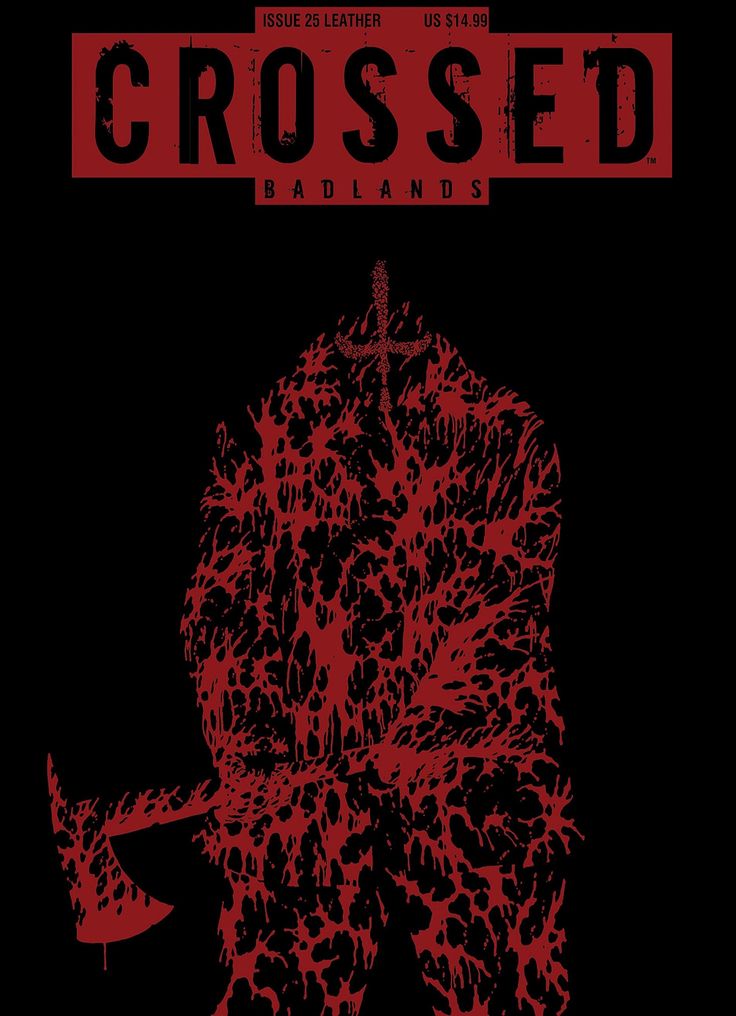 • From our list we would choose to put a cross against sugar, chocolate, biscuits, sponge cake, and mints.right cross• I would really have to deliver a right cross.• She threw a right cross that nearly knocked me over the railing.• He pounded Benichou to the body and caught him with a right cross to the chin at the end of the first.• Jab-jab, left hook, my opening left hands moving him to the right, to meet my right cross.• She also had a sincere right cross.• The right cross is the payoff punch of the entire science.have ... crosses to bear• We all have our crosses to bear.crosscross3 ●●● S2 adjective [usually before noun] especially British English ANGRYangry or annoyedget/be cross (with somebody) She gets cross when he goes out drinking. Sometimes I get very cross with the children.cross at/about She was cross at being interrupted.► see thesaurus at angry
—crossly adverbExamples from the Corpuscross• She was cross at the way he had treated her as though she weren't a normal girl - some kind of freak.
• From our list we would choose to put a cross against sugar, chocolate, biscuits, sponge cake, and mints.right cross• I would really have to deliver a right cross.• She threw a right cross that nearly knocked me over the railing.• He pounded Benichou to the body and caught him with a right cross to the chin at the end of the first.• Jab-jab, left hook, my opening left hands moving him to the right, to meet my right cross.• She also had a sincere right cross.• The right cross is the payoff punch of the entire science.have ... crosses to bear• We all have our crosses to bear.crosscross3 ●●● S2 adjective [usually before noun] especially British English ANGRYangry or annoyedget/be cross (with somebody) She gets cross when he goes out drinking. Sometimes I get very cross with the children.cross at/about She was cross at being interrupted.► see thesaurus at angry
—crossly adverbExamples from the Corpuscross• She was cross at the way he had treated her as though she weren't a normal girl - some kind of freak.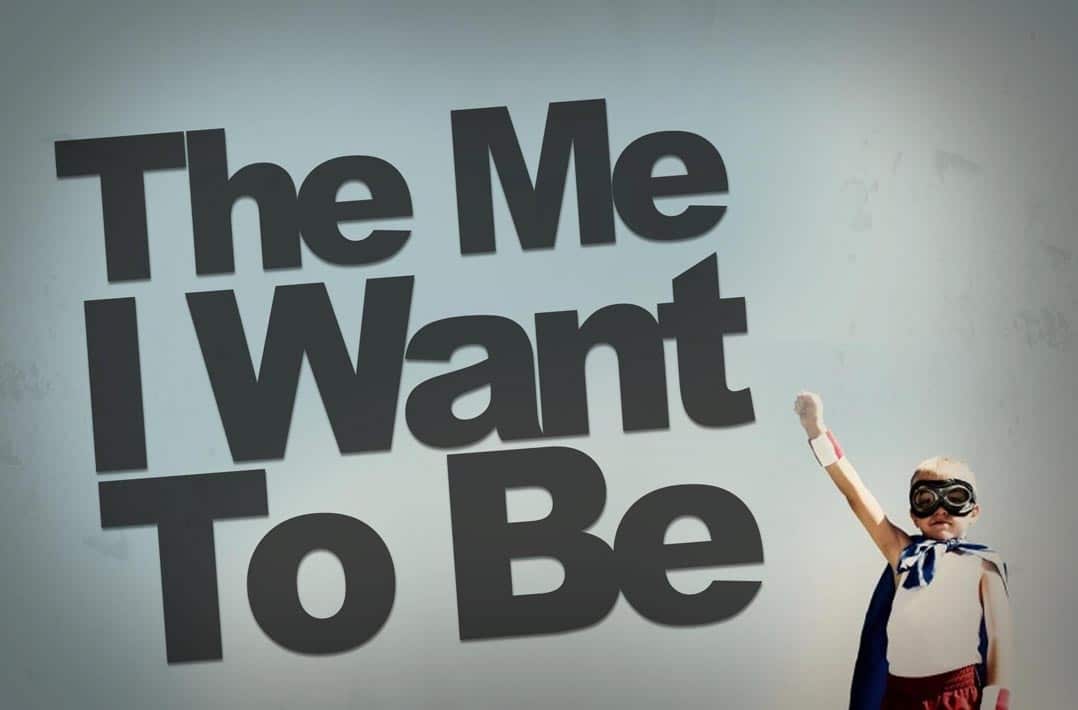 • How hot she was, caught in these cross beams!• This monoclonal antibody shows no cross reactivity with transforming growth factor alpha.• Good lecturers will often make cross references to earlier lectures.• It had a ten-inch blade that was triangular in cross section.• Mum will be cross when she finds out about the broken vase.• I'm sorry I was cross with you.get/be cross (with somebody)• Then we were crossing a rutted rock pavement, a trig point incongruously ahead.• He is cross at having to come here when his time with Enid is so short.• A line which would never be crossed could be drawn down the center of the market.• In our cross-cultural world the language wires get crossed ever more frequently.• Her legs were crossed so that her knees were exposed.• Once the line between the conventional primary source and the secondary study is crossed, the flood is even worse.• Did you see the truck that was crossing the river and crashed through the ice?• It is not uncommon to hear of old women who are cross when asked to perform domestic tasks in residential care!cross-cross- /krɒs $ krɒːs/ prefix 1 CROSSgoing from one side to the other a cross-Channel ferry (=sailing from Britain to France)
2 CONNECTED WITHgoing between two things and joining them cross-cultural influencesExamples from the Corpuscross-• cross-country skiingFrom Longman Business Dictionarycrosscross /krɒskrɒːs/ verb [transitive] cross a cheque British EnglishBANKING to draw two lines and write the words ‘account payee’ on a cheque, showing that it can only be paid into a bank account of the person named on the cheque, and not exchanged for cash or paid into a different accountSYNENDORSE→ See Verb tableOrigin cross2 (900-1000) Old Norse kross, from an unrecorded Old Irish cross, from Latin crux
• How hot she was, caught in these cross beams!• This monoclonal antibody shows no cross reactivity with transforming growth factor alpha.• Good lecturers will often make cross references to earlier lectures.• It had a ten-inch blade that was triangular in cross section.• Mum will be cross when she finds out about the broken vase.• I'm sorry I was cross with you.get/be cross (with somebody)• Then we were crossing a rutted rock pavement, a trig point incongruously ahead.• He is cross at having to come here when his time with Enid is so short.• A line which would never be crossed could be drawn down the center of the market.• In our cross-cultural world the language wires get crossed ever more frequently.• Her legs were crossed so that her knees were exposed.• Once the line between the conventional primary source and the secondary study is crossed, the flood is even worse.• Did you see the truck that was crossing the river and crashed through the ice?• It is not uncommon to hear of old women who are cross when asked to perform domestic tasks in residential care!cross-cross- /krɒs $ krɒːs/ prefix 1 CROSSgoing from one side to the other a cross-Channel ferry (=sailing from Britain to France)
2 CONNECTED WITHgoing between two things and joining them cross-cultural influencesExamples from the Corpuscross-• cross-country skiingFrom Longman Business Dictionarycrosscross /krɒskrɒːs/ verb [transitive] cross a cheque British EnglishBANKING to draw two lines and write the words ‘account payee’ on a cheque, showing that it can only be paid into a bank account of the person named on the cheque, and not exchanged for cash or paid into a different accountSYNENDORSE→ See Verb tableOrigin cross2 (900-1000) Old Norse kross, from an unrecorded Old Irish cross, from Latin crux
Rugged terrain - terrain - Big Encyclopedia of Oil and Gas, article, page 3
Page 3
tundra, where the disturbed surface layer of the earth is restored after several decades, in swampy areas, which complicate and greatly increase the cost of construction and installation work of drilling and operational facilities.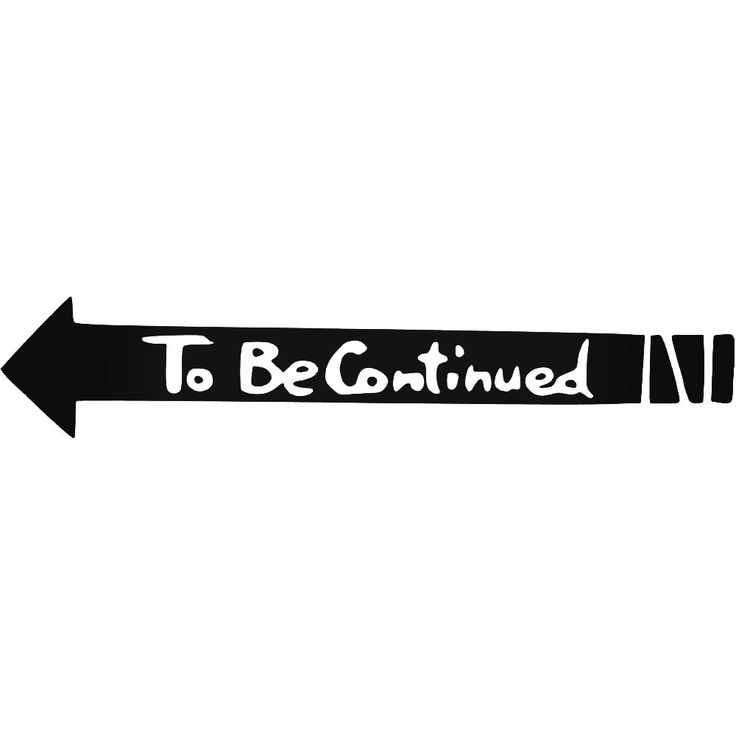 These circumstances explain the almost universal construction of well clusters, not only in fields with highly rugged terrain and in conditions where it is required to open oil deposits under industrial and civil structures, under the bottom of rivers and lakes, under the shelf zone from the coast and from overpasses, but also on flat areas. [31]
These circumstances explain the almost universal construction of well clusters, not only in fields with highly rugged terrain and in conditions where it is required to open oil deposits under industrial and civil structures, under the bottom of rivers and lakes, under the shelf zone from the coast and from overpasses, but also on flat areas. [31]
Delivery by water is rarely used due to the short duration of the navigation period and the complexity of transshipment devices. Due to their limited length and productivity, fuel delivery by under-weight ropeways is also rarely used - at small power plants, at rough terrain . In recent years, the delivery of fuel to power plants from the places of its extraction by conveyor-m and is being introduced abroad. This type of transport is promising for power plants of the USSR with a delivery distance of up to about 25 km and a fuel consumption of 2-3 million tons per year and more. [32]
Scheme of sewerage basins /, / / and. [33] [33] |
The number of sewage basins depends on the terrain of the object under consideration and can be very different. For small settlements with a calm and uniform relief, the number of sewage basins can be limited to one basin (see Fig. 1.4), and for large cities with rough terrain this number can be significant. On fig. 3.1 shows the sewerage scheme of a populated area with three sewer basins. [34]
Blocked school buildings, which are currently the most common, consist of a number of separate blocks-buildings (educational, educational-residential, halls, etc.), interconnected by warm transitions or directly adjacent to each other. Such a composition is usually used in the design of large-capacity buildings intended for construction in the middle lane (II and III building-climatic regions), as well as buildings under construction in seismic regions and regions with rough terrain . [35]
Scheme of sewerage basins /, / / and. [36] [36] |
A sewerage basin is a part of the territory of a city or settlement, bounded by watersheds on all sides except one. Using the plan, which shows a city planning project with contour lines, it is possible to outline a number of sewage basins on it. The number of sewage basins depends on the topography of the object under consideration and can be very different. For small settlements with a calm and uniform relief, the number of sewage basins can be limited to one basin (see Fig. 1.4), and for large cities with rough terrain this number can be significant. On fig. 3.1 shows the sewerage scheme of a populated area with three sewer basins. [37]
The route is coordinated with the relevant road authority, so that sometimes the operational rules of these roads require pipelines to be laid with some deviation from a straight line. It often happens that agricultural enterprises (collective farms, state farms) ask to lay pipelines along crop rotation fields or along forest protection belts. They especially apply these conditions to communication lines, usually laid along the routes of gas pipelines or condensate pipelines, connecting several points that are significantly separated from each other. For gas pipelines rugged terrain has no value; for condensate pipelines, through which a two-phase liquid is pumped, the terrain is of great importance. The more the terrain is crossed, the greater the pumping losses. Therefore, it is necessary to make options for smoothing the marks and, in some cases, even go for an increase in the length of the pipeline in order to reduce losses. [38]
They especially apply these conditions to communication lines, usually laid along the routes of gas pipelines or condensate pipelines, connecting several points that are significantly separated from each other. For gas pipelines rugged terrain has no value; for condensate pipelines, through which a two-phase liquid is pumped, the terrain is of great importance. The more the terrain is crossed, the greater the pumping losses. Therefore, it is necessary to make options for smoothing the marks and, in some cases, even go for an increase in the length of the pipeline in order to reduce losses. [38]
The route is approved by the relevant road authority, so that sometimes the operational rules of these roads require pipelines to be laid with some deviation from a straight line. It often happens that agricultural enterprises ask to lay pipelines along crop rotation fields or windbreaks. They especially apply these conditions to communication lines, usually laid along the routes of gas pipelines or condensate pipelines, connecting several points that are significantly separated from each other.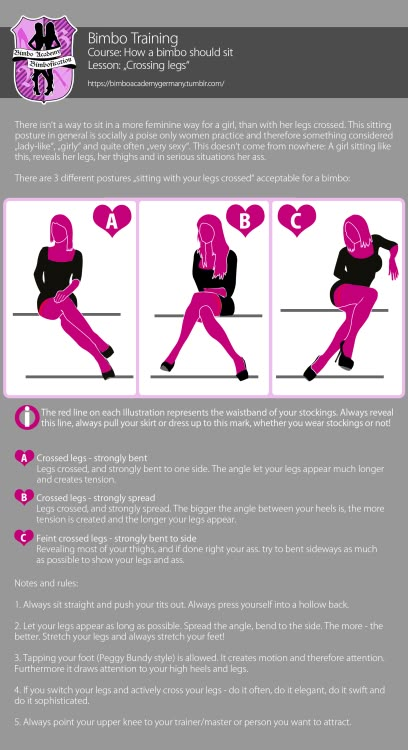 For gas pipelines rugged terrain has no value; for condensate pipelines, through which a two-phase liquid is pumped, the terrain is of great importance. The more the terrain is crossed, the greater the pumping losses. Therefore, it is necessary to make options for smoothing the marks and, in some cases, even go for an increase in the length of the pipeline in order to reduce losses. [39]
For gas pipelines rugged terrain has no value; for condensate pipelines, through which a two-phase liquid is pumped, the terrain is of great importance. The more the terrain is crossed, the greater the pumping losses. Therefore, it is necessary to make options for smoothing the marks and, in some cases, even go for an increase in the length of the pipeline in order to reduce losses. [39]
In all cases where gas is used to clean the cavity, the method and procedure for performing work must be agreed with the State Gas Inspectorate. When purging the pipeline with gas, air must first be expelled from it. Gas to displace air must be supplied with a pressure of not more than 0 2 MPa. The purge is considered complete if a jet of clean air or gas comes out of the purge nozzle. If water comes out of the vent pipe after the piston or separator has been pushed out, elastic separators must be additionally passed through the pipeline. When purging the pipeline, the passage and release of gas or air, dirt and the cleaning device through the linear fittings is prohibited. In swamps and flooded areas specified in the project, after passing the metal cleaning piston, elastic separators are additionally passed. Blowing without passing metal cleaning pistons is allowed at crossings through water barriers, in sections from rugged terrain . Contamination in these cases should be removed by increasing the flow rates and volume of air or gas. The length of the pipeline section blown without the passage of cleaning devices should not exceed 5 km. Flushing with the passage of elastic separators is carried out in sections of the pipeline, the testing of which is provided for in the project by a hydraulic method. The length of such sections should not exceed 30 km. At the same time, water must be filled in front of the separator in a volume of at least 15% of the volume of the cavity of the cleaned section of the pipeline. [40]
In swamps and flooded areas specified in the project, after passing the metal cleaning piston, elastic separators are additionally passed. Blowing without passing metal cleaning pistons is allowed at crossings through water barriers, in sections from rugged terrain . Contamination in these cases should be removed by increasing the flow rates and volume of air or gas. The length of the pipeline section blown without the passage of cleaning devices should not exceed 5 km. Flushing with the passage of elastic separators is carried out in sections of the pipeline, the testing of which is provided for in the project by a hydraulic method. The length of such sections should not exceed 30 km. At the same time, water must be filled in front of the separator in a volume of at least 15% of the volume of the cavity of the cleaned section of the pipeline. [40]
Pages: one 2 3
Cross country running - mind and body benefits
Running is great, but it can be boring, like any other monotonous activity that is repeated unchanged.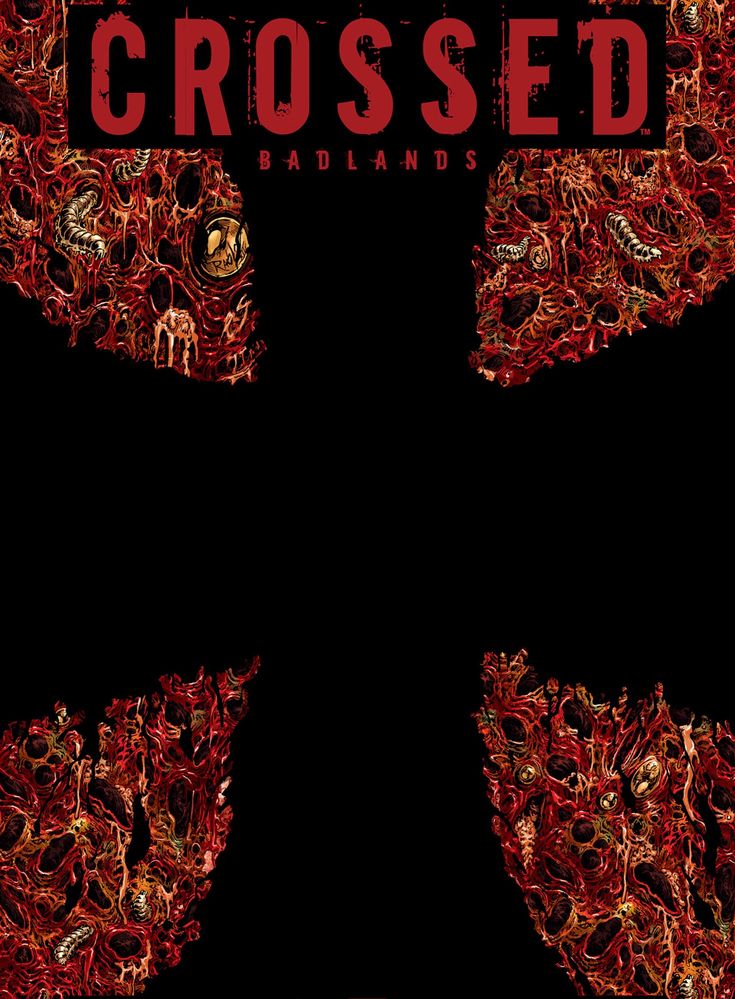 If you don't diversify your workouts, you risk losing interest in running.
If you don't diversify your workouts, you risk losing interest in running.
When the dusty concrete jungle breeze doesn't motivate you to run, trail running can be a new stimulus to running.
Overcoming the changing terrain, you will improve your fitness and enjoy the beauty of the surrounding nature, distracted only by your own thoughts (unless you decide to turn on your favorite podcast). Trail running, although it will require a lot of effort, can be an enjoyable way to bring back your old love of running.
Let's look at the mind and body benefits of trail running.
Body Benefits of Trail Running
From a physical standpoint, one of the benefits of trail running is the soft surfaces of most trails, which absorb some of the impact on the joints. By running at a moderate pace, you can also minimize (or even eliminate) the risk of some common injuries that result from the constant impact of your foot on the road while you run.
Another plus is the wide variety of trails. Protruding tree roots, rocks, leaves, twigs, and a host of other obstacles along the way make trail running less static than running on a paved road. Adjusting to the uneven terrain, you will have to constantly change the nature of the run and the length of the stride.
Protruding tree roots, rocks, leaves, twigs, and a host of other obstacles along the way make trail running less static than running on a paved road. Adjusting to the uneven terrain, you will have to constantly change the nature of the run and the length of the stride.
In this sense, trail running can be a great way to develop balance and strengthen those muscle groups that you haven't used before. Cross-country running with overcoming descents, climbs, steps and high altitude suggests a more versatile physical activity.
Benefits of Trail Running for the Mind
Well known and studied the fact that being in the forest has a calming effect on us. In the fresh air, we get rid of stress and tension faster than indoors. Research has proven time and time again that spending time in the forest is good for our brain and its cognitive functions. The surrounding picturesque landscapes cheer up.
Also, the mindset when running cross country can be very different from what we think about when running on the highway. Runners often opt for quieter, more relaxed runs as a way to take their minds off the competitive spirit of road running. Most see trail running as a more meditative approach to running and an exercise that brings a sense of physical and spiritual harmony with nature.
Runners often opt for quieter, more relaxed runs as a way to take their minds off the competitive spirit of road running. Most see trail running as a more meditative approach to running and an exercise that brings a sense of physical and spiritual harmony with nature.
Cross-country running is an opportunity to forget about calculations and goals, about the stresses of city life, and direct the flow of your thoughts in a different, more pleasant direction. Concentrate on the running itself, enjoying the peaceful scenery.
Pro tips from runner Michael Wardian
Here are the top benefits of trail running according to runner Michael Wardian:
- Soft surface
"Due to the soft ground surface, trail running reduces the risk of overuse injuries as well as the impact load that needs to be absorbed - especially as training volume increases."
- Change of pace
"The terrain on the trails forces you to run slower and more carefully, this allows you to adapt, getting used to running at a different pace.
